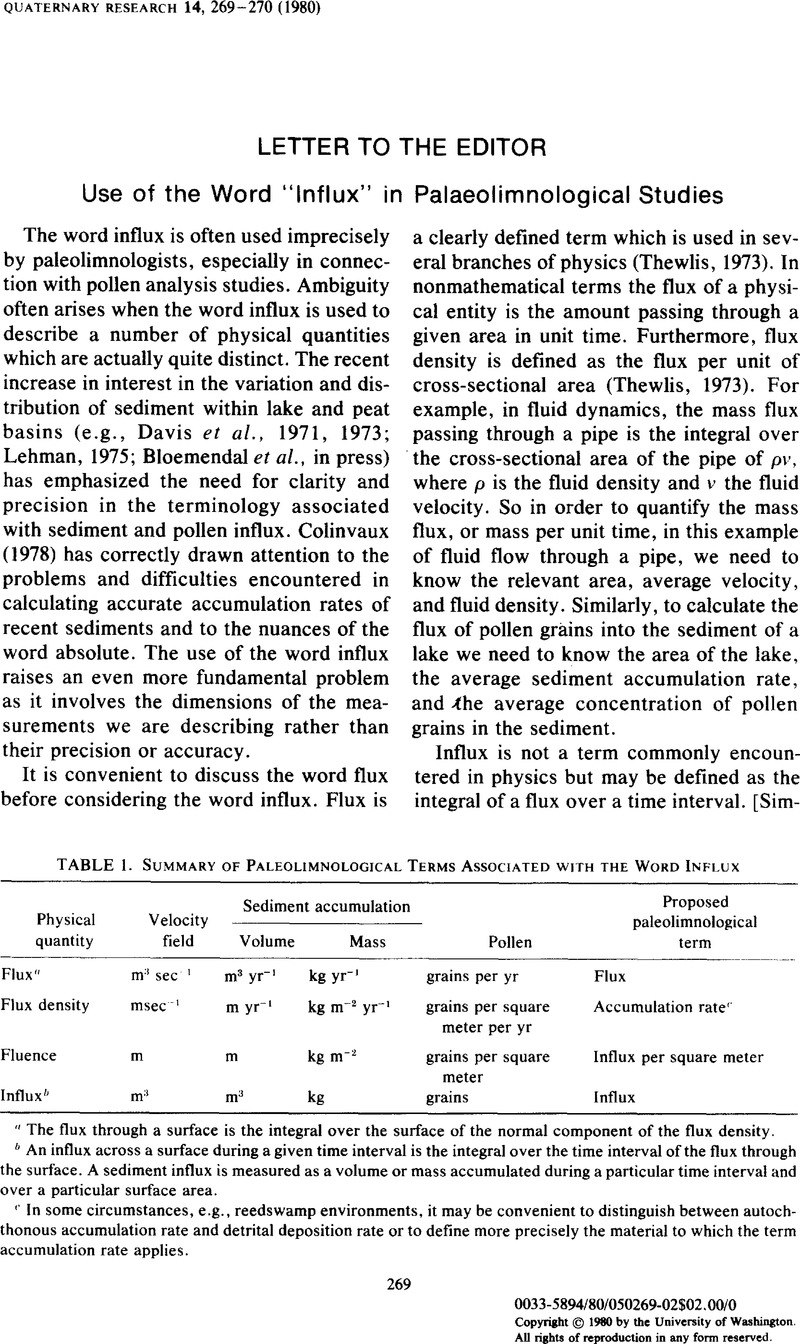Crossref Citations
This article has been cited by the following publications. This list is generated based on data provided by Crossref.
Howe, Sally
and
Webb, Thompson
1983.
Calibrating pollen data in climatic terms: Improving the methods.
Quaternary Science Reviews,
Vol. 2,
Issue. 1,
p.
17.
CASELDINE, CHRISTOPHER J.
1983.
Pollen analysis and rates of pollen incorporation into a radiocarbon‐dated palaeopodzolic soil at Haugabreen, southern Norway.
Boreas,
Vol. 12,
Issue. 4,
p.
233.
BENNETT, K. D.
1983.
DEVENSIAN LATE‐GLACIAL AND FLANDRIAN VEGETATIONAL HISTORY AT HOCKHAM MERE, NORFOLK, ENGLAND.
New Phytologist,
Vol. 95,
Issue. 3,
p.
489.
Edwards, K.J.
and
Thompson, R.
1984.
Magnetic, palynological and radiocarbon correlation and dating comparisons in long cores from a northern irish lake.
CATENA,
Vol. 11,
Issue. 1,
p.
83.
Prentice, I.Colin
1985.
Pollen Representation, Source Area, and Basin Size: Toward a Unified Theory of Pollen Analysis.
Quaternary Research,
Vol. 23,
Issue. 1,
p.
76.
Prentice, Colin
1988.
Vegetation history.
p.
17.
Edwards, Kevin J.
Whittington, Graeme
and
Tipping, Richard
2000.
The incidence of microscopic charcoal in late glacial deposits.
Palaeogeography, Palaeoclimatology, Palaeoecology,
Vol. 164,
Issue. 1-4,
p.
247.
Edwards, Kevin J.
and
Whittington, Graeme
2000.
Multiple charcoal profiles in a Scottish lake: taphonomy, fire ecology, human impact and inference.
Palaeogeography, Palaeoclimatology, Palaeoecology,
Vol. 164,
Issue. 1-4,
p.
67.
Bennett, K. D.
and
Willis, K. J.
2002.
Tracking Environmental Change Using Lake Sediments.
Vol. 3,
Issue. ,
p.
5.
Turetsky, Merritt R.
Manning, Sturt W.
and
Wieder, R. Kelman
2004.
Dating recent peat deposits.
Wetlands,
Vol. 24,
Issue. 2,
p.
324.
Lacourse, Terri
2005.
Late Quaternary dynamics of forest vegetation on northern Vancouver Island, British Columbia, Canada.
Quaternary Science Reviews,
Vol. 24,
Issue. 1-2,
p.
105.
Giesecke, Thomas
Fontana, Sonia L.
van der Knaap, Willem O.
Pardoe, Heather S.
and
Pidek, Irena A.
2010.
From early pollen trapping experiments to the Pollen Monitoring Programme.
Vegetation History and Archaeobotany,
Vol. 19,
Issue. 4,
p.
247.
Maher, Barbara A.
and
Thompson, Roy
2012.
Oxygen isotopes from Chinese caves: records not of monsoon rainfall but of circulation regime.
Journal of Quaternary Science,
Vol. 27,
Issue. 6,
p.
615.
Paus, Aage
2013.
Human impact, soil erosion, and vegetation response lags to climate change: challenges for the mid-Scandinavian pollen-based transfer-function temperature reconstructions.
Vegetation History and Archaeobotany,
Vol. 22,
Issue. 3,
p.
269.
Poska, A.
2013.
Encyclopedia of Quaternary Science.
p.
839.
Hofmann, Frieder
Otto, Mathias
and
Wosniok, Werner
2014.
Maize pollen deposition in relation to distance from the nearest pollen source under common cultivation - results of 10 years of monitoring (2001 to 2010).
Environmental Sciences Europe,
Vol. 26,
Issue. 1,
Birks, H. John B.
Felde, Vivian A.
Bjune, Anne E.
Grytnes, John-Arvid
Seppä, Heikki
and
Giesecke, Thomas
2016.
Does pollen-assemblage richness reflect floristic richness? A review of recent developments and future challenges.
Review of Palaeobotany and Palynology,
Vol. 228,
Issue. ,
p.
1.
Mander, Luke
and
Punyasena, Surangi W.
2018.
Methods in Paleoecology.
p.
215.
Poska, Anneli
and
Hicks, Sheila
2024.
Reference Module in Earth Systems and Environmental Sciences.



